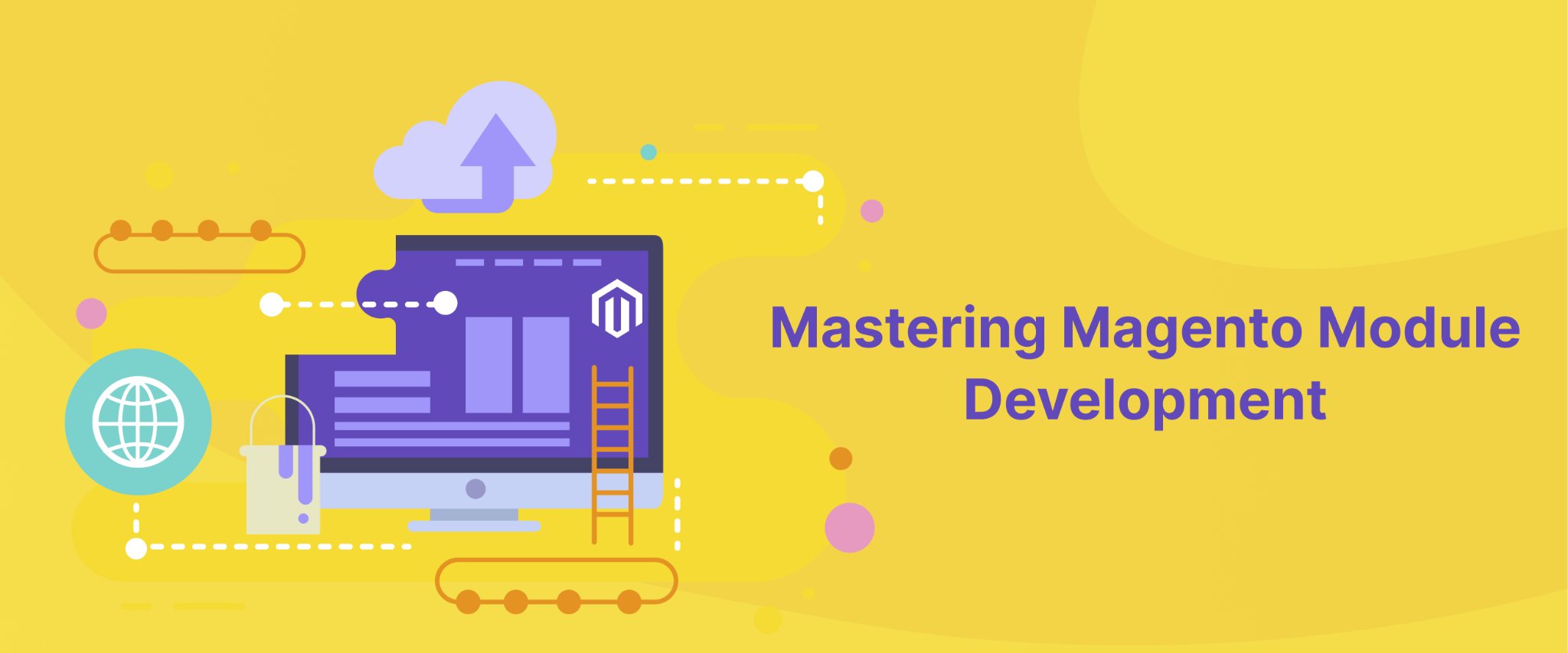
There is a flurry of interest among business owners in Magento module development services today! A powerful and widely used e-commerce CMS, Magento 2 development services are the most common among online store owners.
As a dedicated e-commerce platform, it comes with almost all the features you need to run a successful online business.
When you use Magento module development services, you can maximize its potential, but if you can't find what you need, you can always go about adding custom features.
Now let's talk about Magento module development services and how they work. Let's build a custom module.
About Magento Module Development
Magento modules play a critical role in customizing and creating online stores powered by Magento. Modules are used to extend the capabilities of the Magento platform. It is merely a piece of code that constitutes a module. Integrating third-party services, adding new features, or both can enhance an online store. Module development in Magento facilitates this process.
Designing a Magento module can be challenging and requires a high level of technical expertise. To create a Magento module, you must hire Magento 2 developers that are familiar with Magento platform functionality and PHP and Zend Framework, which are used in Magento development.
Creating a Magento module: Structure
Modules in Magento 2 require an understanding of the module directory architecture. There are two places in Magento 2 where modules can be created: the app/code folder and the vendor folder. For smooth development and deployment, choosing the right Magento 2 hosting is essential, as it ensures compatibility, performance, and scalability for your custom modules.
Magento 2 has all its core modules installed in vendor/Magento/Magento- folders. Whenever you override existing functionality or customize the core module, committing the app's repository and selecting the app/code directory is best.
Why should businesses go with choosing Magento Module Development Company?
Getting Magento module development help can have a lot of advantages. For module development, hiring a dedicated Magento development company will always go to you:
Experience and expertise.
A Magento development company specializes in Magento development and has a team of experienced developers who understand the platform well. Having worked on similar projects, they have valuable insights and tips based on their understanding of complex modules.
You can count on them for Magento migration services.
Customization and scalability
Custom Magento module development is available from Magento development companies. Custom Magento modules can enhance the functionality of your existing Magento store and seamlessly integrate with it. Furthermore, they will make your modules scalable, enabling you to expand and grow.
Time and cost efficiency
Magento modules can require extensive resources and can be time-consuming to develop. Outsourcing the development can reduce costs and save you time. Developers can deliver projects efficiently when the right infrastructure, resources, and tools exist.
5 easy steps for Development Of A Magento 2 Module
Here is a step-by-step tutorial for creating Magento 2 modules.
Build the Magento Module Directory
Create a folder called VendorName_ModuleName in the directory app/code to build the extension in the given structure. This is XYZ_Mymodule, where XYZ is the vendor provider, and Mymodule is the module name.
app/code//Mymodule |
To create a folder, use the following command:
- cd to the root folder
- mkdir app/code/Vendor Name
- mkdir app/code/Vendor Name/Mymodule
Magento 2 Module declaration
Create a configuration file that declares the Magento 2 module. Magento 2 searches for the module's configuration in the directory during module development. Establish a configuration file named module.xml.
An information file that contains the name of the module, its version, and its dependencies.
Here is the code:
|
Register the Created Module in Magento 2
Registering the module in Magento 2 requires using the Magento Component Registrar class, which defines its location. Let's continue creating our module's registration.php file:
app/code//mymodule/registration.php |
Here's the code:
\Magento\Framework\Component\ComponentRegistrar::register( \Magento\Framework\Component\ComponentRegistrar::MODULE, 'Vendor Name_Mymodule', __DIR__ ); |
Using the register method of the ComponentRegistrar class, we pass two parameters, one telling us the type of component we will be registering and the other telling what the module name is: Vendor Name_Mymodule. Magento 2 module creation begins with this step.
- Vendor Name: Vendor name.
- Mymodule: module name.
All modules follow this standard file format except the module name, which varies from module to module.
Step 4: Start the command
Following the above steps should lead to the development of a no-frills module. Here are the commands you need to run to let Magento know it exists:
php bin/magento setup:upgrade
php bin/magento setup:di:compile
It shows the output of our module: Vendor name_Mymodule.
Step 5: Activate the Magento 2 module
If you want to know whether the module is enabled or disabled, you can use the following command line:
php bin/magento module:status |
Using the following command, you can enable your disabled module:
Php bin/Magento module:enable Vendor Name_Mymodule |
First time enabling the module. Check the module's status and ensure it's enabled. Alternatively, open app/etc/config.php and look for Vendor Name_Mymodule, which must have a value of 1.
It's there! You've created your first Magento 2 module! With the command line mentioned before, check the modules' status after enabling the module.
Why is implementing Magento Module Development a beneficial option?
E-commerce businesses and developers alike benefit from Magento module development. These are some of the key benefits:
- Personalization. The Magento modules allow you to customize and extend the features of your e-commerce store. Integrate third-party services, add new features, or modify existing ones.
- Scalability. It's no secret that Magento is scalable, and modules go a long way to making it happen. You can improve performance, handle more traffic, and manage more products by creating custom modules.
- Flexibility. Modules let you customize your store's look and feel. You can offer your customers a branded and unique shopping experience with total control over both front and backend aspects.
Conclusion
Magento 2 modules are critical to customizing and expanding your business's functionality. Adding a new feature or including a third-party service through a custom module will assist you in achieving your goals and enhance your clients' experience.
Choosing a Magento module development company or developer with appropriate expertise and experience is essential to ensuring the success of your project. Count on us for Magento 2 Module Development and witness the path to success. If you want to know more about module development tricks in Indonesia or English, go on haidunia.com.



